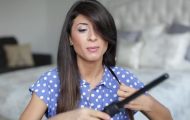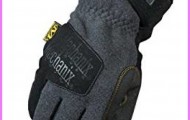DIFFERENT WAYS TO FOLD A NAPPY
NAPPY SERVICE
Large centres usually have a nappy service which will deliver to your door. A big bin for which you pay a refundable deposit is supplied and the soiled nappies are dropped in a bag which fits in the bin. When the clean nappies are delivered (usually twice weekly), the bag containing the soiled nappies is removed and a fresh bag fitted. A deodorant is supplied for use in the bin.
A heat sterilisation method is generally used to launder these nappies and they go through as many as ten washing procedures to make sure they are thoroughly clean. The cost of a nappy service is calculated on a sliding scale and so the more you take per week the cheaper the cost per nappy. Nappy service works out to around double the cost of doing it yourself but is cheaper than using disposables. The convenience is marvellous and it takes a load off the mother especially in the early months.
1 This method is suitable for small babies as it uses only one pin
2 This method is a good way of folding a nappy because it holds together well and gives a snug fit
3 This method is particularly suitable for boys because it has an extra thick.portion at the crotch
The shaded areas show where the nappy liner goes NAPPY REQUIREMENTS
Your shopping list for nappies will therefore be something like this if you decide to do it yourself:
4 curved pins with safety catch
2 dozen towelling nappies
2 dozen twillback nappies
Disposable nappy liners can be bought from chemists or supermarkets as needed
2-3 one-way washable liners
Disposable nappies, bought by the’packet as needed (have some on hand for when you come home from the nursing home)
2-3 doctors flannel pants (or more if you can afford them) or 2-3 plastic pants to wear over nappies.
Pants are worn over nappies except for plastic covered disposables. The cheapest are made from plastic but if you can afford something better it will be worth it, because plastic is non-porous and does not allow the skin to breath. It also keeps moisture in the pappy which promotes nappy rash.
Doctors flannel which is made from wool is best for use over nappies particularly when the baby is small. The advantage of doctors flannel is that it absorbs moisture and allows the skin to breathe, all of which helps prevent nappy rash. You can buy it by the metre, cut it into triangles, and hem around the edges if you like. It is then pinned on over the nappy. Far more convenient are ready-made doctors flannel pants. Some have studs which close in the front to make a pantie, others are shaped like pants with elastic at the waist and around the legs.
When laundering doctors flannel pants do not use water that is too hot or, being wool, they will shrink, and do not dry in direct sunlight or they will yellow. Do not use bleach or put them in nappy sterilising solution. Handwash preferably in pure soap and rinse well. Fabric softener can be used if desired.
How to launder nappies. It is important to wash and rinse nappies thoroughly to kill germs. This can be done by boiling, or by sterilising in one of the nappy sterilising chemicals. You should follow the manufacturer’s instructions about changing the solution or it will lose its efficacy. After you remove the nappy, flush any stool down the lavatory and drop the nappy into the solution and leave overnight. Although most manufacturers state that nappies can be rinsed and hung up after being in the sterilising solution, most mothers find they need to wash them either by hand or washing machine afterwards. Give one or two washes in very hot water, using pure soap and rinse very well. Never use ordinary household washing powder or cake soaps on babys clothes or bedding as it can cause a severe rash, particularly if the soap contains enzymes. A final rinse in fabric softener keeps nappies fluffy but may affect absorbency. Drying in the sun whitens and sterilises nappies, but ironing hardens them.
However, if you live in a subtropical area, it is necessary to iron nappies and all baby clothes because of the danger of Putsi fly laying its eggs in them.
A strong ammonia smell in the nappy indicates that bacteria have changed the urine into ammonia which causes a severe rash known as ammonia dermatitis (261).
A final rinse in a white vinegar water solution (1 tablespoon to 500 ml water) will counteract the ammonia (in nappies and nappy liners) by neutralising it. Strict attention must also be paid to washing the nappies thoroughly.
General care of baby clothes. Wash all items before use. especially sheets which may contain starch. Always use pure soap for washing anything which comes into contact with your babys skin, as allergic reactions and rashes are common if soap with additives is used. Drip-dry fabrics save ironing time, and airing in the sun has a mild sterilising effect.
Maybe You Like Them Too
- 50 Unique Travel Destinations You Must Visit Before You Die
- Tamar Braxton A Life in Music
- Sunny Hostin A Biography
- Steve Coogan A Life in Comedy
- Sterling K Brown A Biography


